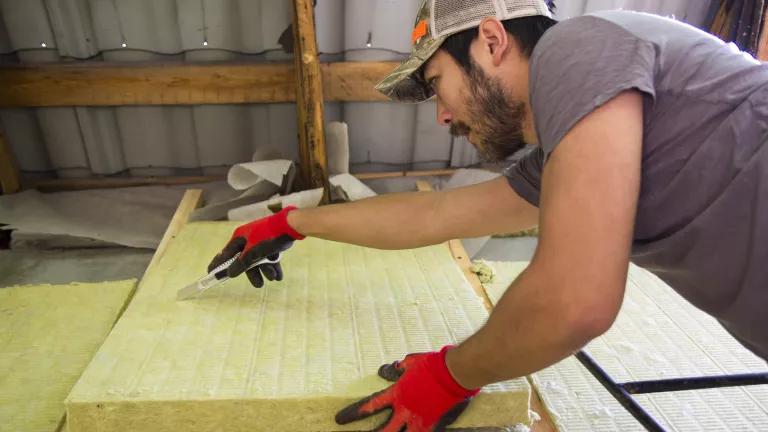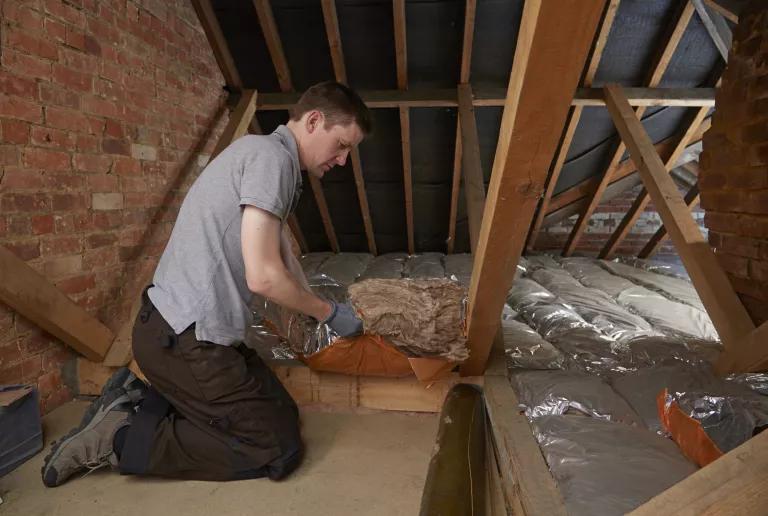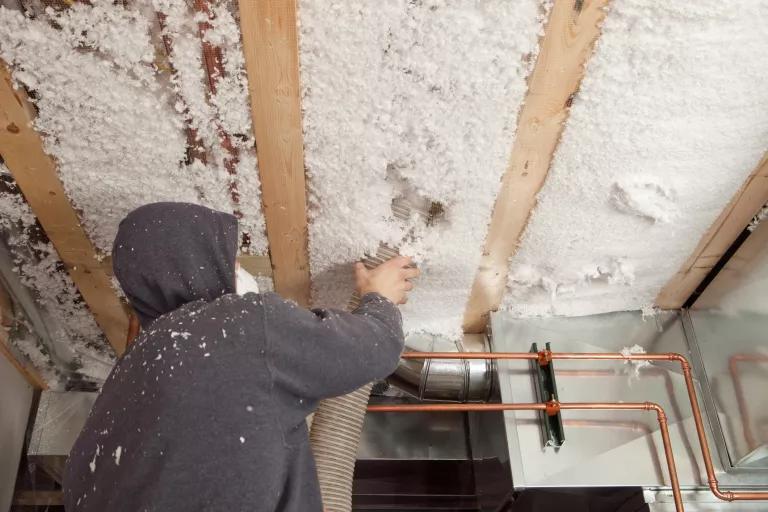Healthy Energy Efficiency: The Proof Is in the Materials
These new resources shine a light on the efficacy of healthy materials and deepen our understanding of how contractors and industry insiders actually use materials. We hope they are informative and useful and that they whet the appetite for healthier material choices in housing retrofits.

Investing in energy efficiency upgrades in multi-family affordable housing can deliver multiple benefits beyond reducing waste, ranging from lower energy costs for building owners and residents to healthier buildings with smaller carbon footprints. However, it is essential that the materials being used for energy efficiency upgrades are always the healthiest available.
Materials used to perform energy-efficiency upgrades not only provide multiple benefits, material choice also impacts indoor air quality, that’s why it’s so important to choose the healthiest option available. When contractors are choosing materials, choices are often guided by performance, availability, and even material preferences. The way professionals source and choose their materials depends on where they are and what materials will do the best job.
To provide industry experts and contractors the information needed to help make healthier building materials the easier choice, NRDC just co-released two studies: Case Study-Energy Performance of Chicago Properties Retrofit With Fiberglass Insulation, by Elevate Energy and Drivers, Adoptability, and Performance of Healthier Energy-Efficiency Retrofit Materials in Affordable Multifamily Housing by Three3. The Chicago case study—which examines material performance in 13 multifamily properties in the Chicago metropolitan area and the drivers, adoptability, and performance study—focuses on in-depth contractor and industry expert interviews on the main components driving material choices.
These studies are part of our ongoing effort through the Energy Efficiency for All initiative—involving NRDC and The Healthy Building Network (HBN), Elevate Energy, VEIC, Three3, and the International Living Future Institute—to ensure healthy building materials are part of the energy efficiency discussion.
We’ve already issued several publications that provide feasible and direct pathways to ensure energy efficiency programs and policies meaningfully benefit the health of residents. They include: Policy Matters: Making Energy Upgrades Healthier for Residents, Workers, and Neighbors accompanied by a policy fact sheet; our report Making Affordable Multifamily Housing More Energy Efficient: A Guide to Healthier Upgrade Materials; and our tool that can be used by building contractors and implementers along the supply chain, Guidance for Specifying Healthier Insulation and Air-Sealing Materials.
Our hope is that these publications will be used by decision makers, policy advocates, and industry experts participating in material selection.
Do healthy materials perform as well as other options?
There are many factors that impact the selection of materials for an energy-efficiency upgrade, including climate zone, building type and vintage, and existing conditions (e.g., current insulation in a roof cavity). As the body of research on healthier building materials expands and contractors and others who specify which materials to use incorporate these materials into energy-efficiency upgrades, some question how energy performance is affected.
To help answer this question, in the Case Study-Energy Performance of Chicago Properties Retrofit With Fiber Glass Insulation by Elevate Energy we present an analysis of 13 Chicago metropolitan area multifamily properties retrofitted between 2014 and 2016. In each of these properties, the roof cavity or attic floor was air-sealed and then insulated with a blown-in fiber glass insulation, a recommended category of insulations examined in Energy Efficiency for All’s report, Making Affordable Multifamily Housing More Energy Efficient: A Guide to Healthier Upgrade Materials. For the 13 properties, average gas energy savings was 18 percent. By comparison, a national study found that attic insulation and air sealing delivered average post-retrofit gas energy savings of 8 percent and 7 percent, respectively. This national comparison supports the observation in this case study that fiber glass insulation, specifically an insulation that contains lower levels of toxic materials as verified by third-party designations, achieves effective energy performance.

Contractors at work
Are healthy materials easy to use?
Understanding firsthand why installers choose certain building materials is key to understanding how to make healthier materials a preferred choice. Drivers, Adoptability, and Performance of Healthier Energy-Efficiency Retrofit Materials in Affordable Multifamily Housing, a research report written by Three3, captures insights from contractors and industry experts within the affordable multifamily energy retrofit industry through in-depth interviews. The study team aimed to understand the contractors’ and other experts’ motivations and values related to retrofit material choices and use.
The report presents the interviewees’ perspectives related to usability, adoptability, and limitations of healthier building materials; and their recommendations for improvements in promoting the use of healthier materials. The interviews captured rich anecdotes from those who are most familiar with the use, impact, and performance of these healthier alternatives.
These interviews revealed that health, safety, and environmental impacts are in fact considered when insulation materials are selected. This understanding is an important starting point for designing educational information to further increase the adoption of healthier building materials.

Insulation installment
Why healthier materials matter
Some common types of chemicals found in non-recommended materials include: halogenated flame retardants, formaldehyde-based binders, isocyanates, and phthalate plasticizers. These chemicals can negatively affect reproduction and fetal development, can contribute to cancer, and can cause or exacerbate asthma. These chemicals not only endanger a building’s residents, but also can hurt the workers installing them. More information can be found in our Making Affordable Multifamily Housing More Energy Efficient: A Guide to Healthier Upgrade Materials.
These new resources shine a light on the efficacy of healthy materials and deepen our understanding of how contractors and industry insiders actually use materials. We hope they are informative and useful and that they whet the appetite for healthier material choices in housing retrofits.



